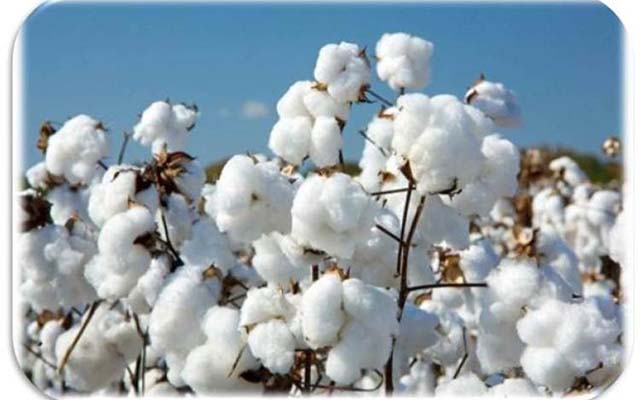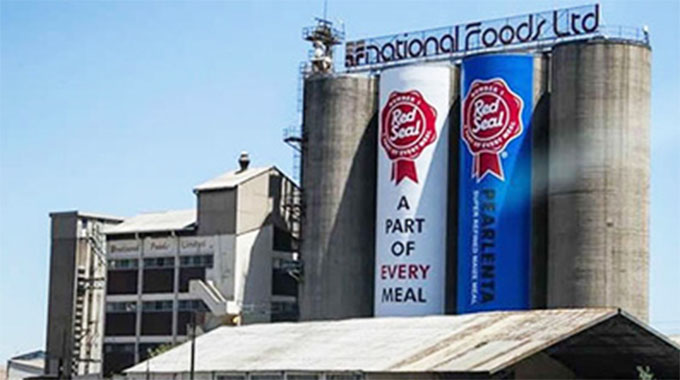Cotton output set to surpass projections

 Martin Kadzere Senior Business Reporter —
Martin Kadzere Senior Business Reporter —
ZIMBABWE’S cotton production is likely to surpass the initial projections amid revelations that some farmers who have not registered under the Government’s free inputs programme planted the crop using the seed leftover from the previous season.
Last season, the Government disbursed free inputs, but some cotton farmers received the seed way after the planting deadline while others were discouraged by poor rains.
While Government distributed about 6 000 tonnes, it is estimated that an additional 2 000 tonnes of seed left from last season might have also been planted, according to Quton executive director Mr Edworks Mhandu.
Farmers under the Government’s free input programme are expected to produce a minimum 110 000 tonnes this year, according to Cottco, which is administering the programme, an increase from 30 000 tonnes. However, estimates are still provisional and subject to revision.
Last week, The Herald Business visited some major cotton growing areas in Mutoko, Bindura, Shamva, Mt Darwin, Muzarabani and Guruve where some farmers expressed concern over inadequate supplies on fertilisers and chemicals.
“We are giving farmers inputs enough for 2 hectares but some farmers have planted more than 2 hectares. That extra hectarage is not cover under the programme.
“Cottco area manager for Mutoko Mrs Melody Ngonyamo said. “We also have farmers who are not registered.
“They now need chemicals and fertilizers. So we are doing the verification first to establish if these farmers are not contracted by other companies. If we can, we will help.”
Farmers who spoke to this newspaper said the Government should distribute more inputs.
“We are very happy with this programme but we are now having shortages of top dressing fertiliser and chemicals,” Mutoko farmer Mr Lovermore Bvumbwe said. I planted about three hectares and I am receiving inputs enough for only two hectares.”
Field assistant officer for Mutoko Mr Ephias Gonogono suggested that there was need for hectarage validation to ensure farmers receive fertilisers enough for the planted crop.
“We are giving inputs enough for two hectares but there are some instances where some farmers planted less than a hectare but still get fertiliser for two hectares or where farmers planted three or four hectares or even more but receive top dressing for two hectares.
“There is need to conduct a proper validation to establish the actual planted hectarage before distributing fertilisers and chemicals to minimise these shortages,” said Mr Gonogono.
In an interview, Cottco acting business manager for Zambezi Valley Mr Walter Hokonya said the company was going to make proper verification in view of helping free growers.
“We are going to work with the Agriculture and Marketing Authority to establish if they are genuine free growers,” he said. In the Zambezi Valley district, Cottco has contracted about 52 000 growers who planted about 73 000 ha.
The potential yield is 33 000 tonnes, up from 6 000 tonnes achieved last year.
Cottco enjoys about 80 percent of the market, way above competitors such as Grafax, ETG, Alliance and China-Africa.
Despite the hiccups, farmers say they expect an abundant harvest this season and have urged Government to provide more inputs next season.
“We’re hopeful that the harvest will be significantly much better this year,” said Mr Morgan Mupamuchena, who planted 6 hectares in Muzarabani and was grower of the year in 2002.
Mr Luke Mukamba, who farms in Shamva said the programme had brought relief to thousands of farmers who for years, have been exploited by private cotton merchants.
Mrs Rosemary Mukamba of Mutoko said farmers have been encouraged by the support from Government was hopeful that this year’s harvest would be bumper. “The crop outlook is fantastic; we have received very good rains and we expect very good yields,” he said.
Many farmers had previously shunned the sector are now being attracted back.
“We happy that Government has finally come to our rescue.
“We now need more chemicals to protect the crop from being attacked by diseases to enhance chances of a good yields,” Mutoko farmer Mr Tichafa Njenge, 32, said.
At some point, cotton was referred to as “white gold” in apparent reference to handsome profits obtained made by the farmers.
However, the opening up of the cotton sector to new players was the death knell for Zimbabwean cotton.
From being one of global cotton’s top quality producer the sector had virtually collapsed.
The success of cotton in Zimbabwe was built around the Cottco inputs credit scheme which started in 1992 and ensured that farmers received adequate funding and quality incentives.








Comments